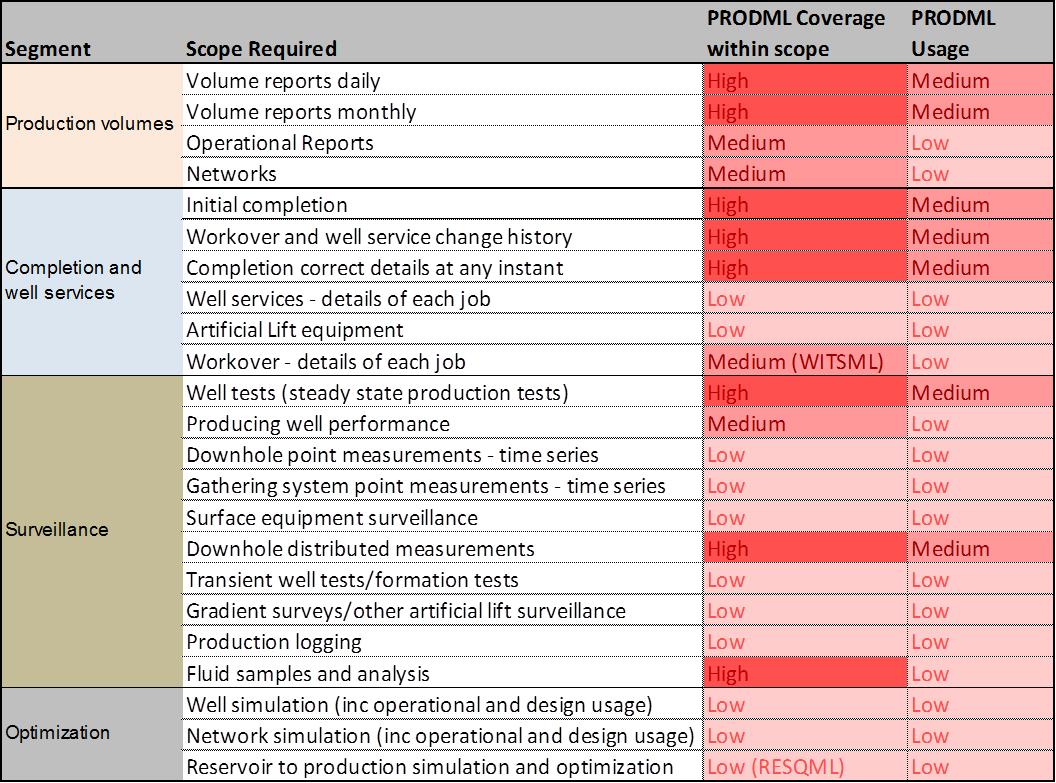1.1 PRODML Overview
| Topic Version | 1 | Published | 12/09/2016 | |
| For Standard | PRODML v2.0 | |||
PRODML is an XML-based data-exchange standard that facilitates reliable, automated exchange of data among software packages used in production management workflows. It defines a set of data objects that can be implemented into software so it can read and write to the PRODML standard format, which allows PRODML-enabled software to more easily share and use this data.
Underpinning PRODML’s domain-specific data models is the Energistics Common Technical Architecture, which provides various technical standards and methods upon which PRODML builds.
The table below lists the main segments of data transfer within production; PRODML standards are in daily commercial use in all of these segments.
| Segment | Scope |
|---|---|
| Production volumes | Internal use, to regulators, to partners. |
| Completion and well services | Hardware and operations over producing life. |
| Surveillance | Monitoring production in the wellbore, the reservoir (near wellbore); and on the surface. |
| Optimization | Decision support both for design and operational optimization. |
NOTE: As described in 1.1.2 Completion and Well Services, completion and well services is now incorporated into WITSML. But, per the integration of the Energistics domain standards (see 2.4 PRODML Use of Other Energistics Domain Standards), WITSML data objects are easily available to user of PRODML.
These segments are defined in more detail in Error! Reference source not found., which shows some of the main data scope requirements within each segment. This figure is intended to be illustrative rather than exhaustive. For each item of data scope, the v2.0 coverage of PRODML is shown, together with a high-level estimate of current usage—the two together giving some idea of maturity. The bands of high-medium-low scores have the following meanings:
- PRODML Coverage
- High: strong coverage where a multi-company group of domain experts has specified the requirement and validated the model.
- Medium: reasonable coverage where significant work has been done, but where the requirement was not the primary aim of the effort, or where the effort was focused on one aspect of the requirements, not general coverage.
- Low: a low level of coverage, either where the scope required is only partially covered or not at all, of where work has been donated and incorporated but based on one company’s views with no peer review.
- PRODML Usage
- High: widespread uptake over a material number of companies/situations. The standard is therefore well-tested and known to be complete.
- Medium: material uptake but in a limited number of cases, e.g. for one purpose, or by a small number of companies. The standard is therefore workable but may need adapting for high usage.
- Low: usage limited to one or two companies, or not used at all. The standard therefore may need work and adaption before it can be used more widely.

The following sections describe in more detail the capability and usage within the segments of production data outlined above.